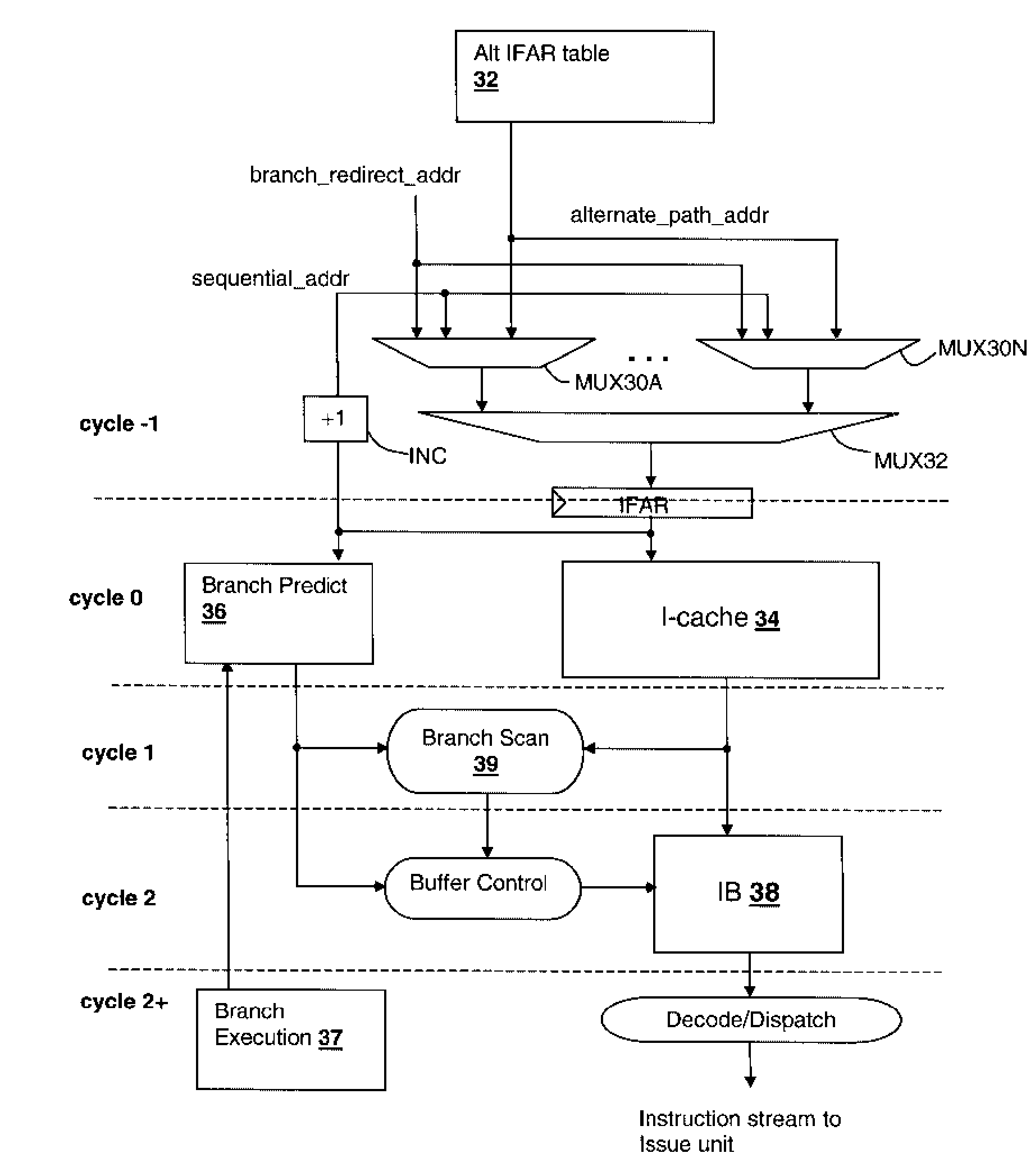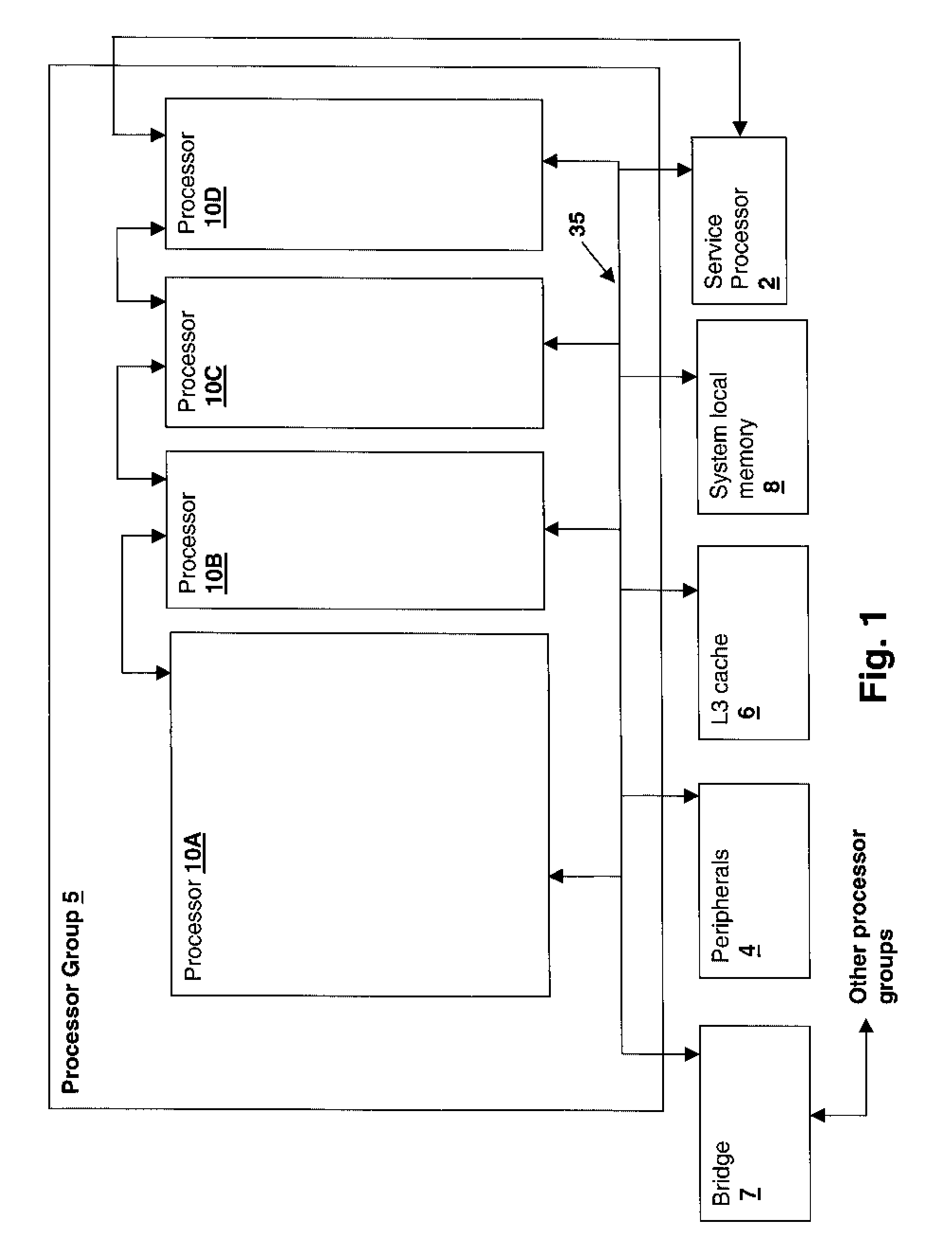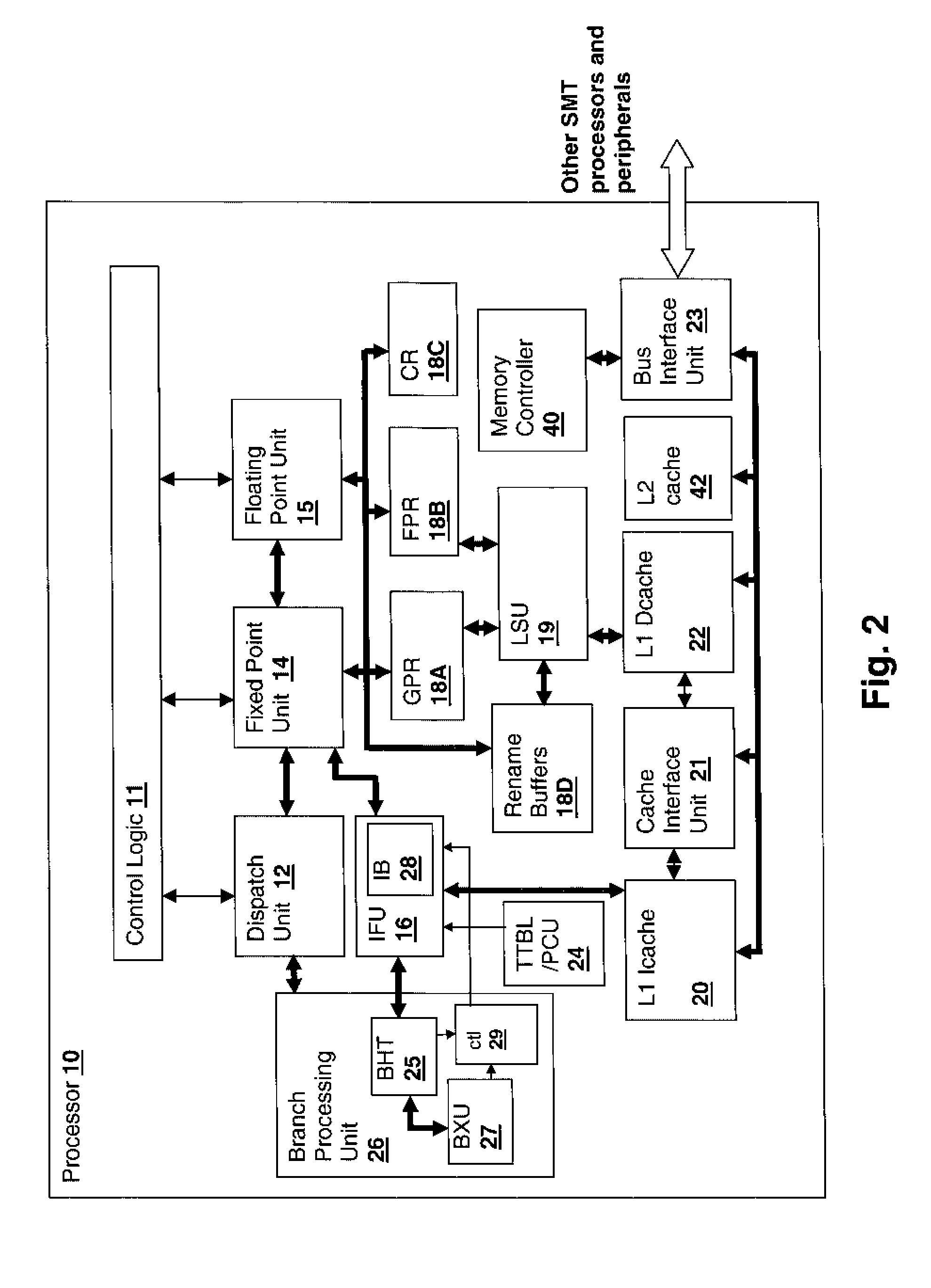Method and Apparatus for Dynamically Managing Instruction Buffer Depths for Non-Predicted Branches
- Summary
- Abstract
- Description
- Claims
- Application Information
AI Technical Summary
Benefits of technology
Problems solved by technology
Method used
Image
Examples
Embodiment Construction
[0017]The present invention concerns methodologies and processor circuits that provide buffering for both predicted and non-predicted instruction streams for branch instruction paths. In the present invention, the buffer size for the predicted and non-predicted instruction paths is dynamically varied in conformity with a measurement of the confidence in the branch predictions. The confidence measurement may be made in a number of ways, but generally provide a measurement of the correct predictions versus the incorrect predictions made by the branch prediction circuits.
[0018]With reference now to the figures, and in particular with reference to FIG. 1, there is depicted a block diagram of a system in accordance with an embodiment of the present invention. The system includes a processor group 5 including multiple multi-threaded processors 10A-D that may be connected to other processor groups via a bridge 7 to form a large scalable processing system. The present invention may be pract...
PUM
 Login to View More
Login to View More Abstract
Description
Claims
Application Information
 Login to View More
Login to View More - R&D
- Intellectual Property
- Life Sciences
- Materials
- Tech Scout
- Unparalleled Data Quality
- Higher Quality Content
- 60% Fewer Hallucinations
Browse by: Latest US Patents, China's latest patents, Technical Efficacy Thesaurus, Application Domain, Technology Topic, Popular Technical Reports.
© 2025 PatSnap. All rights reserved.Legal|Privacy policy|Modern Slavery Act Transparency Statement|Sitemap|About US| Contact US: help@patsnap.com



